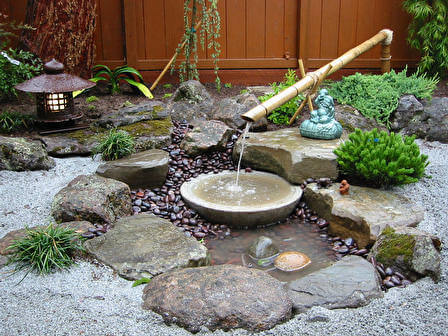
Japanese gardens have been a major part of culture in America for nearly a century and a half. However, they still remain a mystery for most people. Japanese gardens are among the most beautiful in the world. This is because these gardens start with the intent to induce a particular feeling. Today, landscape professionals design these amazing gardens around principles and guidelines that date back more than a thousand years.
Some of those guidelines include natural patterns of rock formations, natural growing plants, and asymmetrical designs. Some gardens arouse feelings of being near a forest stream or wetland. There are also designs patterned after rolling hills. When designing your own beautiful Japanese garden paradise, consider the following facts and tips.
1. Keep in mind that basics consist of plants, water, and rocks. You can find rocks most anywhere. Stones and pebbles can arrange to create the appearance of flowing water. Additional elements for consideration can include stone lanterns, bridges, arbors, and water basins. Plants, set carefully, can help create an illusion of depth where the designer places large plants in front, and smaller ones in back.
2. Your garden’s purpose is to reflect nature’s perfect balance. Rocks and stones represent islands. Waterfalls represent a state of purity and serenity. Stone or wooden bridges imply immortality and a pathway to paradise. Stairs and intriguing pathways provide a journey for the soul. Lanterns represent the inner light that a person can discover within.
3. Lay the stones first to design your path or walkway. This is the path you can take to enjoy your garden’s beauty. Larger stones imply stillness and rest.
4. Surround the stones with trees, plants that flower, or shrubs. Without much space, formatting your yard is critical. You will also have to decide how formal, or not, you want the garden to be. Select your plants or trees for seasons and colors.
5. A water feature adds the perfect touch. A simple water pond can use bamboo, or some other material, and operate using very simple and inexpensive mechanics.
6. Decorations can include lanterns or authentic Japanese furniture. Just keep things to a minimum. Your goal is to achieve a natural look and not make your garden look like a museum filled with artifacts. On the other hand, some empty spaces are okay since empty portions are key Zen garden elements.
Japan, the Land of the Rising Sun, is famous for its beautiful gardens. In fact, every year, millions of people travel to Japan to visit the country’s gardens, but you can have a Japanese garden in your own back yard, even in the midst of bustling San Francisco.
We specialize in creating Japanese gardens. Contact Tamate Landscaping to help you build the beautiful oasis of your dreams.


